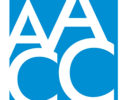Report roundup
By AACC 21st Century Center Staff
April 29, 2021
A monthly roundup of reports of interest to the community college sector.
Here are three reports to check out this month.
- Far fewer college students transferred to other institutions over the past year mainly a result of declining college enrollments, and community college students again saw the biggest drops, according to a report from the National Student Clearinghouse (NSC) Research Center. Overall transfer enrollment is down -7.9% this spring, nearly four times more than last spring. Transfer enrollment declines are especially steep in the community college sector, which saw a -15.2% drop. Transfer enrollments at public four-year colleges remain stable compared to last spring. Upward transfers were the only transfer path to see increases this spring over pre-pandemic levels, the report said. Community college students transferring to a four-year institution without first earning an associate degree increased 7.4% this spring, representing an 11.4-percentage swing from last year’s drop of -4.1%.
- The annual compensation survey by the American Association of University Professors (AAUP) indicates that, overall, average full-time faculty salaries among surveyed U.S. colleges and universities increased 1% over the past year, which is the smallest increase since AAUP began tracking the measure in 1972. After adjusting for inflation, the result was a -0.4% decrease. For associate-degree-granting institutions with faculty ranking systems, average salaries increased 1.7%, an increase of 0.3% in real terms. For the same type of institutions without standard faculty ranking systems, average salaries decreased -2.7%, a decrease of -4.1% after adjusting for inflation. Full-time professors at associate-degree colleges earned, on average, $91,196 (-0.8%), associates $75,550 (0.9%), assistants $64,823 (1.3%) and instructors $54,547 (1.2%). Lecturers earned $68,641.
- Public two-year colleges represent 41% of the nation’s 569 Hispanic-serving institutions (HSIs), which have almost doubled in number over the last 10 years, according to Excelencia in Education. In a new fact sheet, Excelencia points to the role HSIs play in higher education, including that HSIs represent 18% of all U.S. colleges and universities and two-thirds of undergraduate Latinos are enrolled at an HSI. Almost half of students enrolled at HSIs (46%) are Latino. There also are 362 emerging HSIs (or eHSIs) which represent 12% of all U.S. higher education institutions. Among eHSIs, 28% are public two-year colleges.



